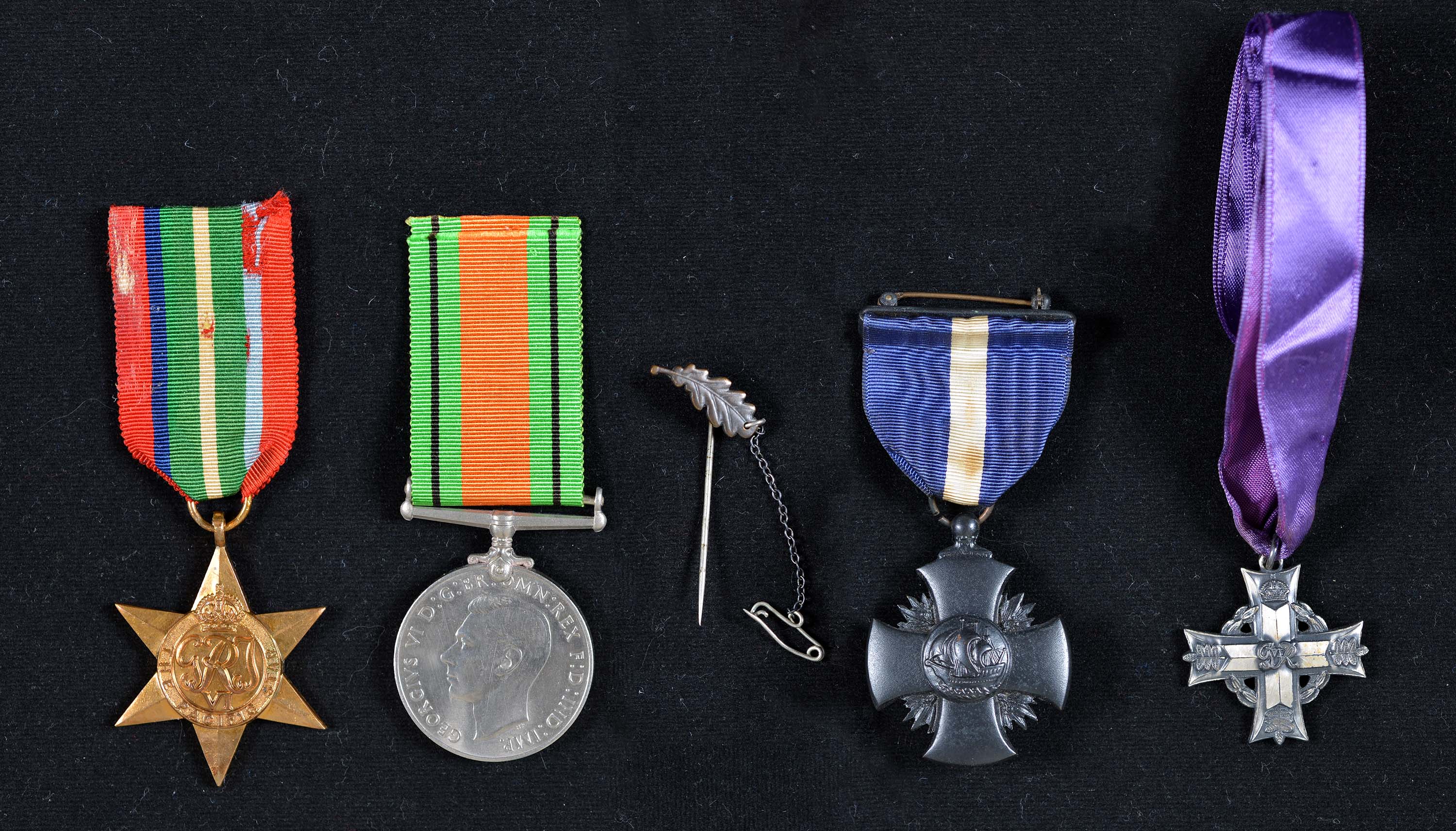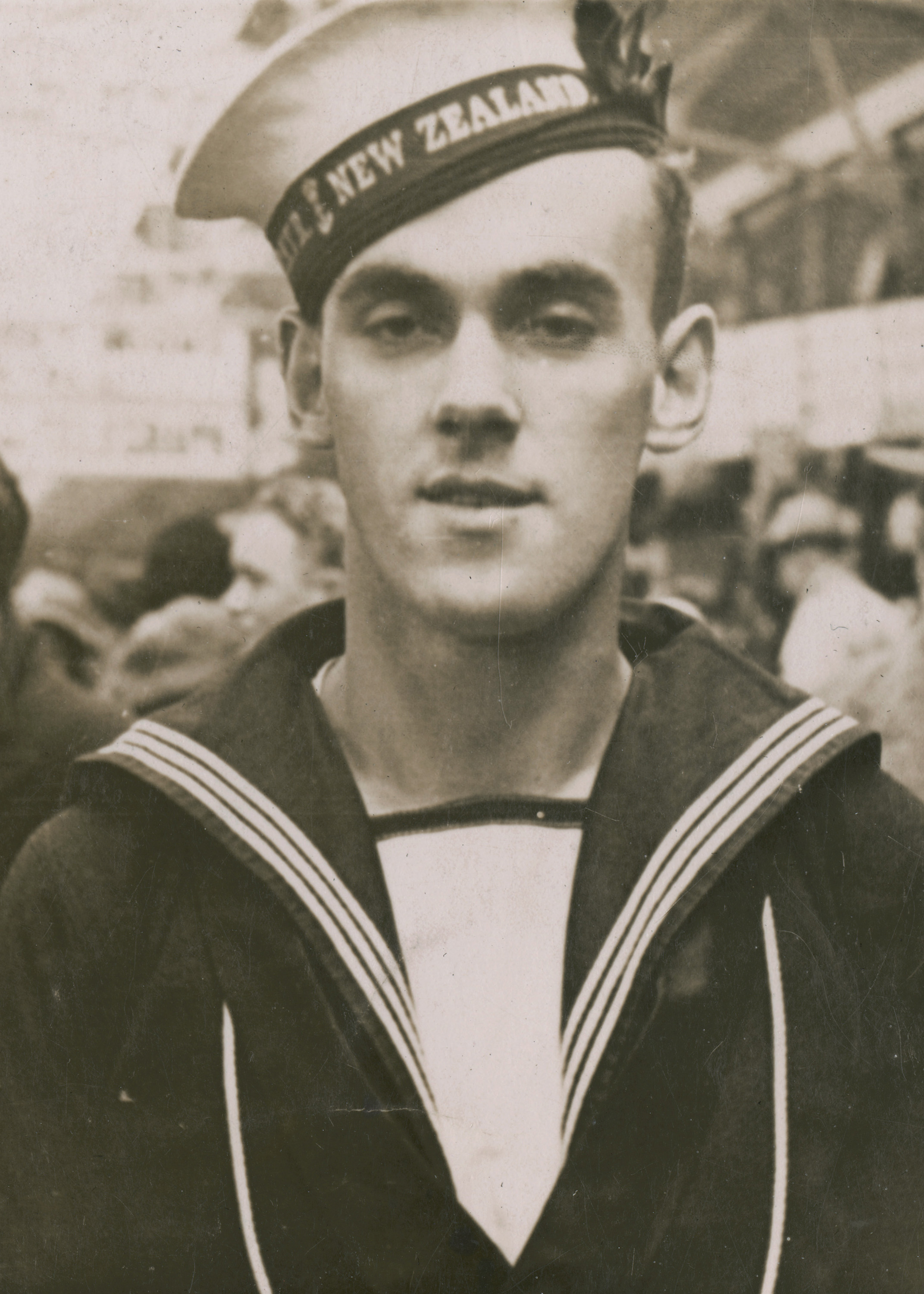

Display No. 18G
BUCHANAN, Campbell Howard
Campbell ‘Buck’ Buchanan enlisted in the Naval Volunteer Reserve as a signalman in 1937. By 1940 he was in England serving onboard submarines for a year before joining the crew of HMNZS Kiwi. In company with HMNZS Moa, Kiwi engaged and sunk the Japanese submarine I-1 off the coast of the Solomon Islands during the Guadalcanal campaign on the night of 29/30 January 1943. Buchanan was HMNZS Kiwi’s only casualty, being grievously injured during the battle and dying ashore the next day. He was Mentioned in Despatches (MiD) for his part in the action and was posthumously awarded the Navy Cross by the United States Navy. His citation records that ‘though mortally wounded, he courageously remained at his battle station during the entire action. He skilfully trained a searchlight on the submarine and kept the target illuminated for the guns of his ship’. Buchanan’s family were awarded the Memorial Cross by the New Zealand Government and received his campaign medals after the war ended. He is buried in the New Zealand War Cemetery at Bourail, New Caledonia.
Awarded medal(s)
Medal Description [Left to Right]:
The Pacific Star
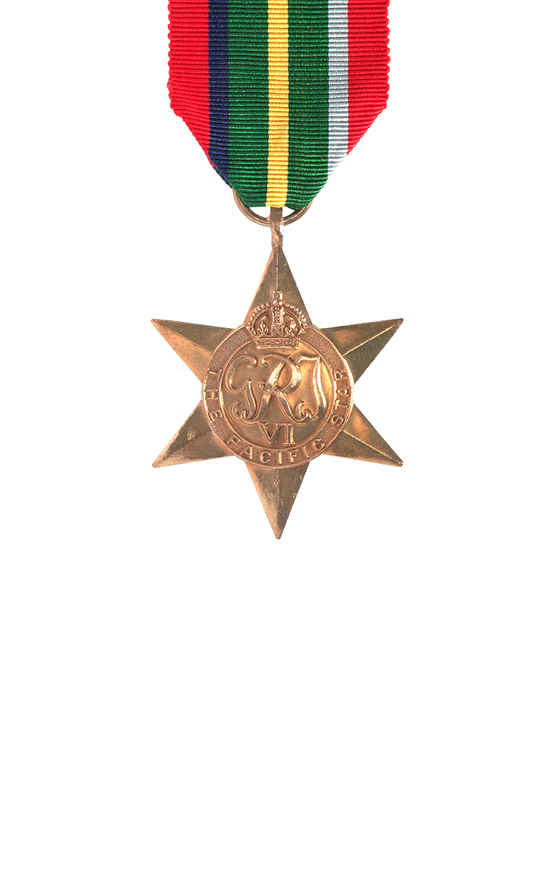
The Pacific Star was awarded in the Second World War for operational service in the Pacific between 8 December 1941 and 2 September 1945. This medal was also awarded for certain specified service in China, Hong Kong, Malaya and Sumatra: between 8 December 1941 and 25 December 1941 (for Hong Kong); between 8 December 1941 and 15 February 1942 (for China and Malaya); and between 8 December 1941 and 23 March 1942 (for Sumatra). The centre of the ribbon is dark green (symbolising the jungle) with a central yellow stripe (symbolising the beaches). On the outer edges are wide stripes of red (representing the Army), with narrow stripes of dark blue and light blue (representing the Navy and Air Force) between the stripes of dark green and red. A ‘Burma’ clasp could be awarded with this medal. Personnel qualifying for both the Pacific and Burma Stars were awarded the first star but only a clasp in respect of the second.
The Defence Medal
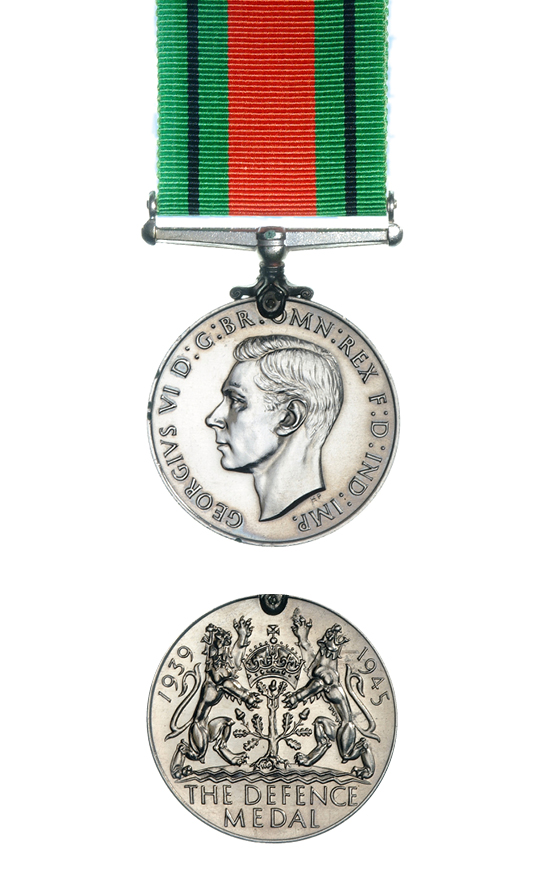
The Defence Medal was awarded to British and Commonwealth forces who served during the Second World War. It was awarded to New Zealand military personnel who served overseas in a non-operational area such as Great Britain, Palestine or Fiji. The ribbon’s flame-coloured orange centre band and green edge bands symbolise enemy attacks on Britain’s green and pleasant land. The narrow black stripes represent the black-outs against enemy air-attacks.
Mention in Despatches emblem 1920-94
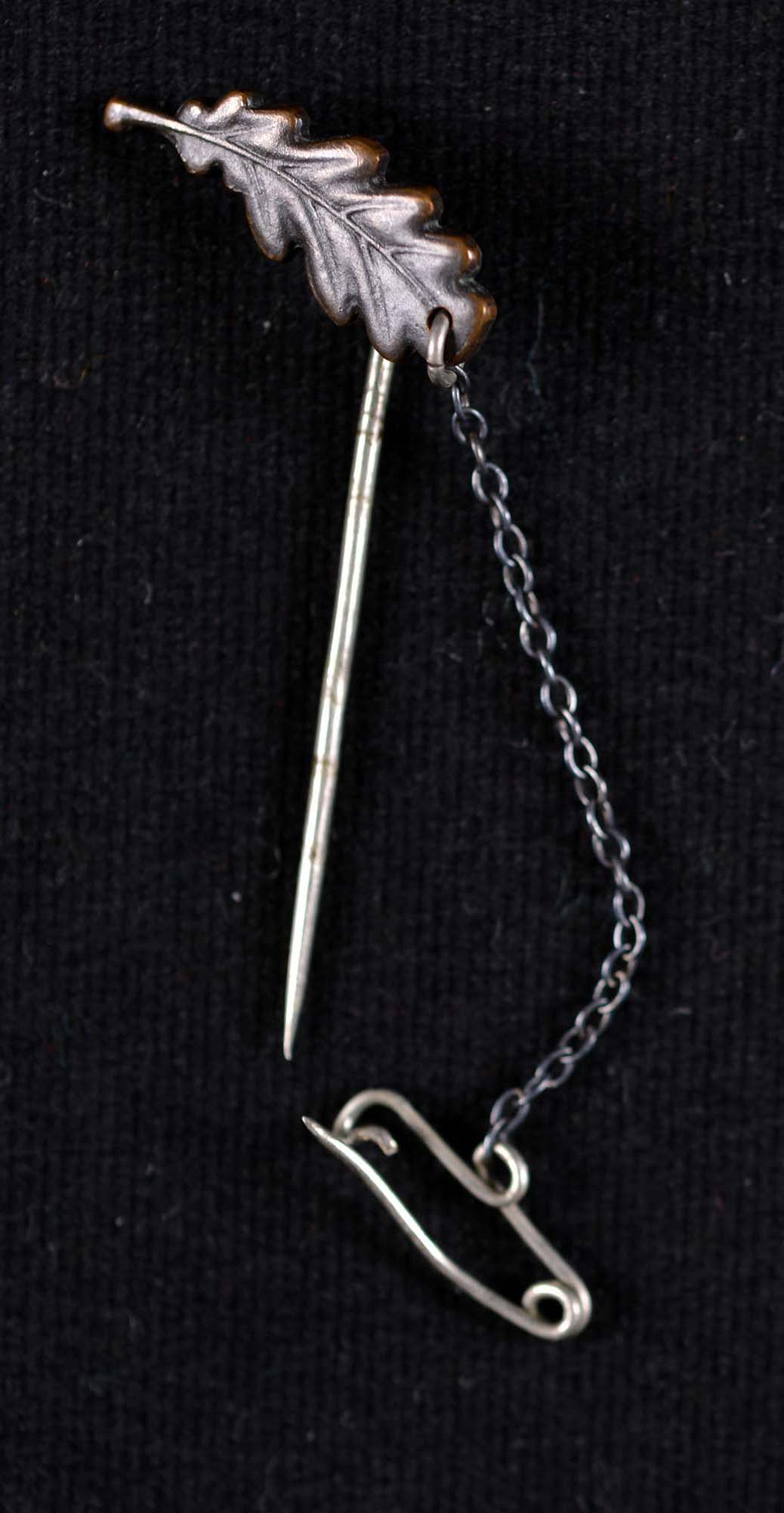
The Mention in Despatches emblem 1920-94 is a single bronze oak leaf device worn on a medal ribbon. It indicates that the recipient was cited for gallantry in an official report submitted by a superior officer. It was instituted in August 1920 and is generally associated with the Second World War, usually worn on the War Medal 1939-45.
A smaller version of the oak leaf is worn on a ribbon bar.
United States Navy Cross
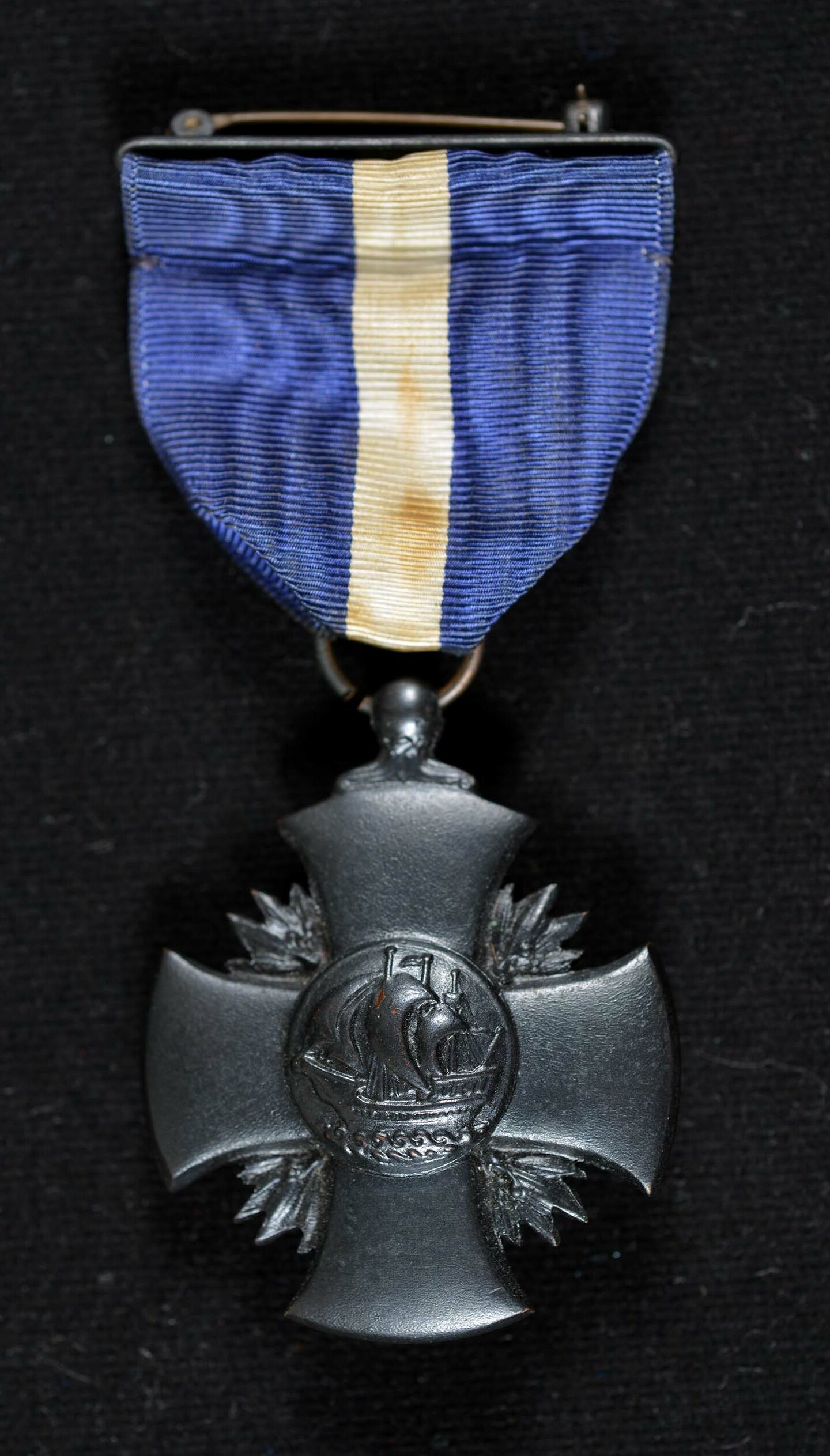
United States Navy and United States Marine Corps’ second-highest military decoration awarded to sailors and marines, who distinguish themselves for extraordinary heroism in combat, with an armed enemy force. It is bestowed by the Secretary of the Navy, and may also be awarded to members of the other armed services, and to foreign military personnel, while serving with US Naval Services. The ribbon has two stripes of blue alluding to naval service and a thinner white central stripe.
The New Zealand Memorial Cross
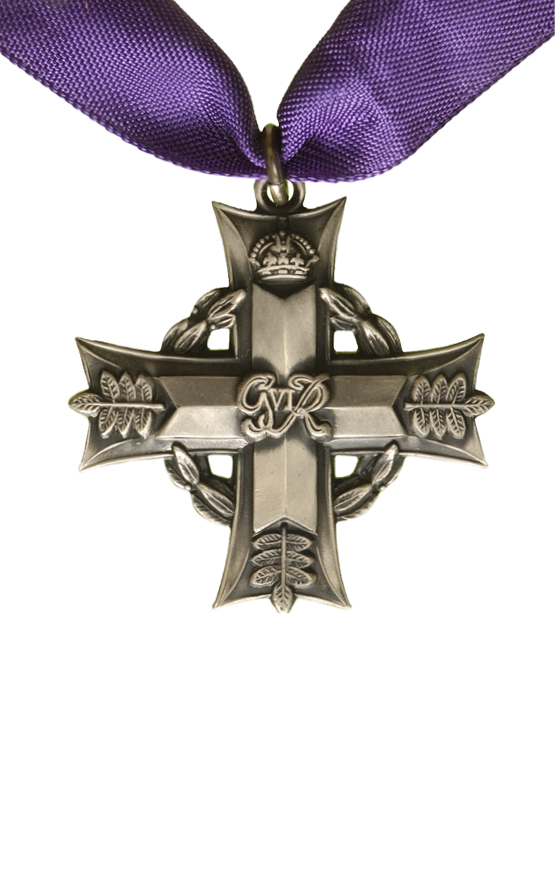
The New Zealand Memorial Cross is awarded to the next of kin of all New Zealand servicemen and women who were killed, while on war service or operational service overseas in the Second World War. It is also awarded to the next of kin of those who subsequently died of wounds received while on war service, or operational service overseas, since the commencement of the Second World War. For deaths during the Second World War the first cross was awarded in the late 1940s or the 1950s to the mother. If the mother was deceased, the first cross was awarded to the father, or if he was also deceased, to the eldest sister, or the eldest brother if the military service person had no living sisters. A second cross was awarded to the widow, eldest daughter or eldest son (in that order of precedence). If the deceased military service person was not married, and had no children, only one Memorial Cross was issued. It is worn on a purple ribbon around the neck.

